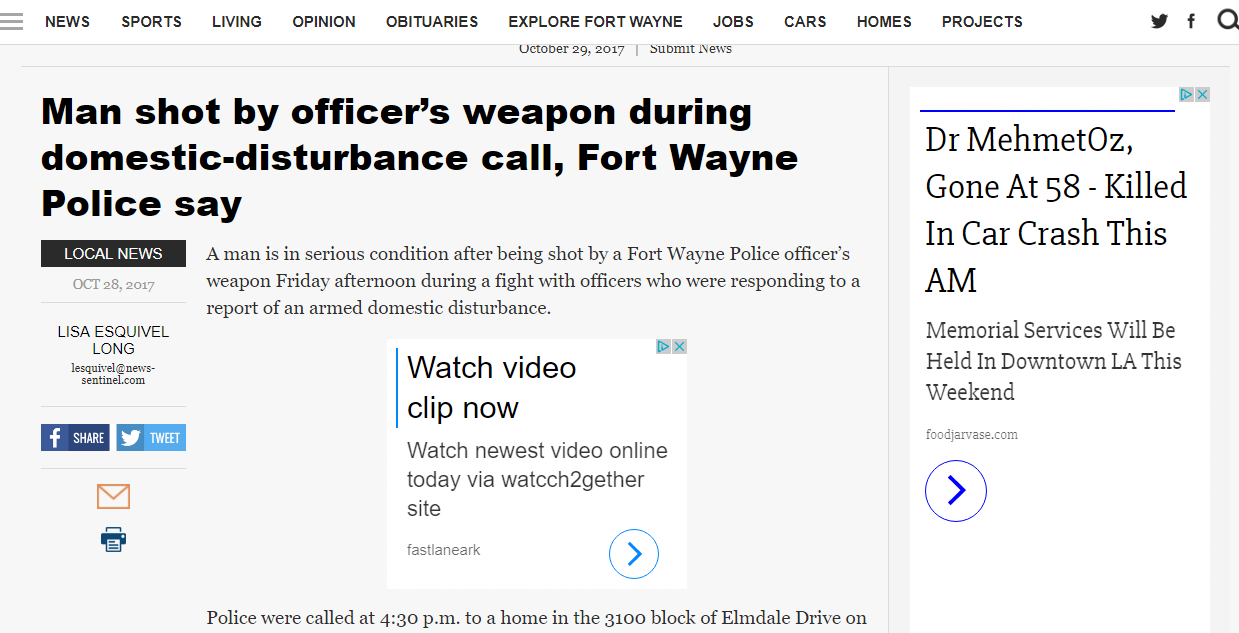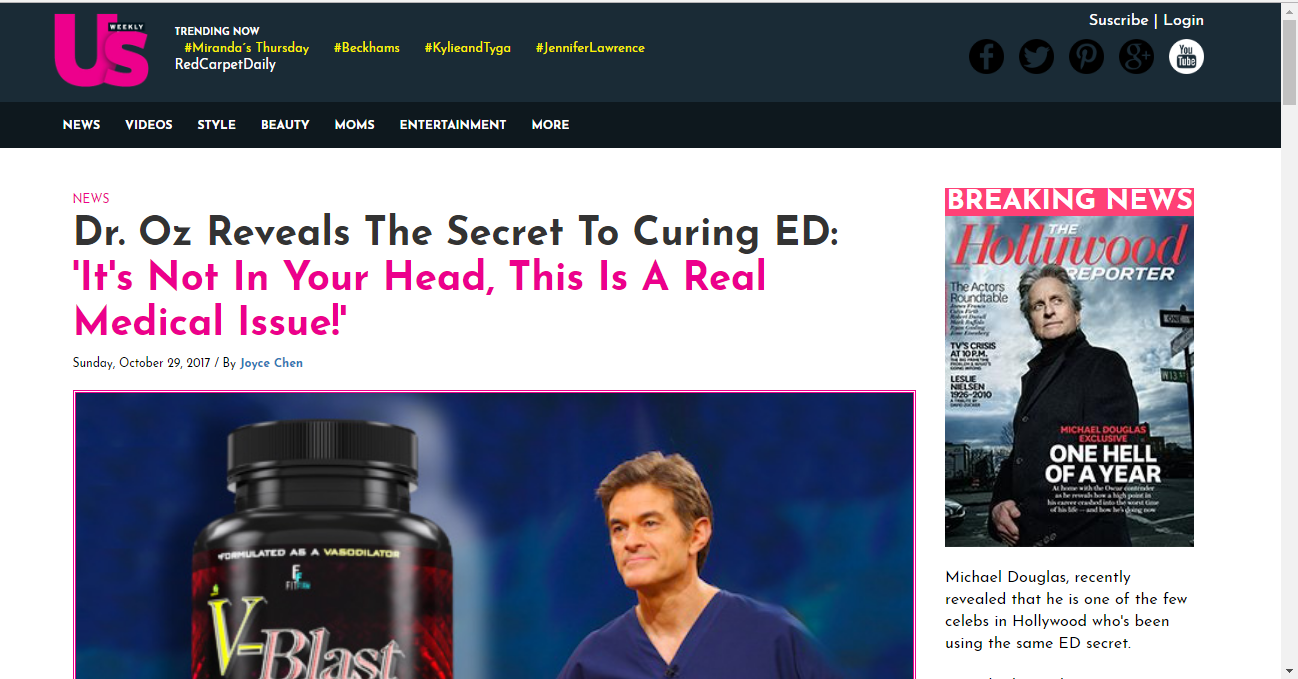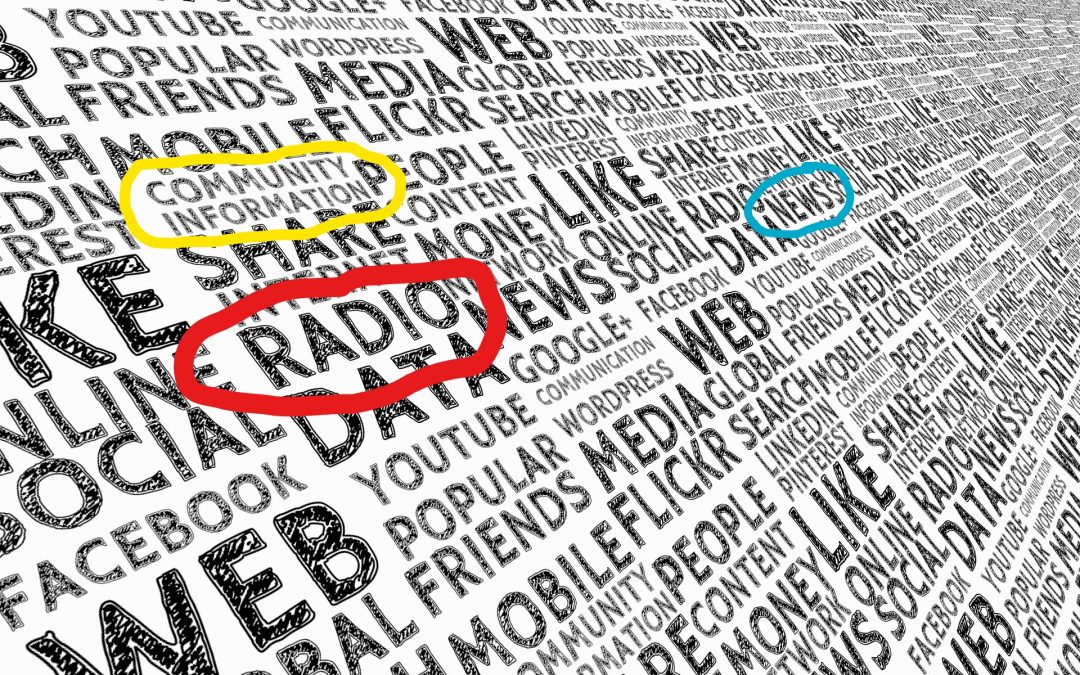
by Scott Howard | Mar 28, 2018 | Marketing and Advertising Insights, ScLoHo's Fort Wayne, ScLoHo's Media, The Not-So-Secret Writings of ScLoHo, WOWO Fort Wayne Radio Advertising with Scott Howard
The President does his annual State of the Union Address, the Governor and Mayor of Indiana and Fort Wayne do their annual State of the State and City Addresses, so how about a look at The State Of Media Advertising?
As we wrap up the 1st quarter of 2018, several items are going on that you need to know about.
First off, the television industry is going thru a transformation similar to what the newspaper industry and phone book business went thru years ago.
The short story is they are suffering. And so they are making changes.
But first let me fill you in on the paper stuff I mentioned.
Phone books have shrunk because of a couple of technology changes. One was the rise of cell phone usage and the dropping of residential landlines. Next was the rise of the web combined with smartphones that now allow us to talk to our phones and have it dial the business we want to call.
Newspapers are an anorexic shell of what they used to be. And again the villain is the internet. It’s not really fair to call the internet a villain, because for us as consumers, the internet is our hero. However, both the phone book and newspapers are only possible if there are advertisers paying to be in those print publications. And they depend on readers reading them. That has dropped year after year.
In Fort Wayne, we had two daily papers that operated under a joint operating agreement for advertising but finally last year, the afternoon paper went to an online only version with the exception of getting a page or two included in the morning paper.
Earlier this month, while waiting for a meeting, I saw a couple of local newspapers in the reception area. It was the Thursday edition and I know they printed it at a loss. Less than a dozen ads in the entire paper except for the classified section. Some sections had zero paid ads.
My industry, the radio broadcasting businesses is well over 100 years old and has had to deal with technology changes. AM radio stations used to broadcast network programs all day and night. CBS and NBC radio networks operated the way that broadcast TV networks do now. As a matter of fact, some of the early TV shows in the 1950’s originated on radio. With the growth of television, and decline in network radio programming, radio stations became more local and they also discovered a new focus.
That local focus included music and records. When I was a kid in the 60’s and 70’s listening to the radio was how we listened to new music. Some stations had personalities that were local celebrities and that was what drew me into a career in radio.
I could continue this history trip down memory lane, but let’s jump ahead to 2018. The internet is no longer the bright and shiny new thing, it’s an intricate part of our lives. This is having an impact on the TV business as mentioned in some stories I read in Mediapost. For example:
TV Enters Permanent Ad Recession
Declines in national advertising revenue have occurred in 8 straight quarters. Starting in July 2016 thru this week, advertising revenue for broadcast TV has been down between 1 and 4%.
Why? Well we have more viewing choices and some are really taking off. Netflix and other web based screen options have been posting gains over the years and that has hurt broadcast TV.
Some broadcast networks are attempting to fight back by reducing the number of commercials they will air.
Fox’s Two-Minutes-Per-Hour Ad Plan: The TV Times They Are A-Changin’
Fox will attempt to lure viewers back to their network by decreasing the number of commercial minutes down to 2 per hour and those two minutes will be very expensive for advertisers to buy. This might be a good move, but they are focused on the wrong problem. The real problem is having shows that people want to watch.
NBC created a hit recently with This Is Us. ABC has The Bachelor and Dancing With The Stars. CBS continues with hits like NCIS. None of these shows cut their commercials to keep viewers.
These TV networks are doing more than just reducing commercial time. They are adapting to the technology. My wife and I now watch more prime time TV on our schedule, with the on-demand feature from Xfinity. People can binge watch on their laptops or smartphones. Will the broadcast TV networks survive? Only if they have advertising support or subscription support.
The digital revolution that TV is going thru is also one that newspapers are trying to use by adding paywalls to their online content. But those dollars will never replace the lost ad dollars they used to bring in when newsprint was in its heyday.
Radio is also at risk, but for the most part it is less dependent on national trends. iHeart radio, the owner of over 1200 radio stations in the country filed for bankruptcy protection, but their downfall is not really a radio issue, it was a series of financial decisions that led to them owing billions in loans.
My company, Federated Media which owns WOWO radio and close to a dozen stations in Indiana is a privately held company and we are doing well. We also have a digital division that was started years ago because our advertising partners wanted someone they could trust to help them with the digital marketing revolution.
Which brings me to another Mediapost article and question:
Has Marketing Gone Too Digital?
The reasons are numerous. Most of the problems are related to marketing people abandoning something that is working and jumping on the digital bandwagon without fully understanding it. And the digital world is constantly changing.
I keep an eye on this stuff for my own interest and also for the best interest of my advertising partners and even before the outrage over Facebook and privacy issues that are still being sorted out as I write this, I pulled some of my advertising partners Facebook Ads and moved their digital spending to a couple of other options that have been very successful. Contact me if you want to know more.
Here’s the big picture to keep in mind. The technology isn’t going to retreat. And just because something is new and shiny doesn’t mean you should be an early adopter and abandon what is working. But neither should you stubbornly hang on to the old ways and ignore the future.
Want help? Let’s talk.

by Scott Howard | Mar 15, 2018 | Marketing and Advertising Insights, ScLoHo's Media, ScLoHo's Web World, The Not-So-Secret Writings of ScLoHo
We are well into 2018 and I have a very important question:
How’s Your Online Visibility?
When was the last time you did an overhaul of your website? If it’s been more than 18 months, your business is hurting.
I sell a variety of radio and digital advertising solutions and there are times when I tell people before we can send people to your website, you need an update.
Here’s a few key items to keep in mind in 2018:
Mobile has overtaken laptop and desktop. This means instead of sitting down with our computer to look for stuff, we are more likely to grab our phone. Your website has to be more than “mobile friendly”. Think Mobile First.
Responsive websites are the new norm instead of having a separate mobile site and a more robust desktop website with the exception of e-commerce sites. When I say Mobile First, assume that the first visit someone is going to have to your website is that tiny screen on their phone, not the big desktop monitor.
So design your website for the best UX (that’s User Experience) on Mobile First and then include a full experience for the minority of folks who will use their computer to visit your site.
Next up, is Voice Search is taking over the world. All the Apple Fans thought it was cool that they could have a conversation with Siri until I showed them how I could also get what I needed by talking to my phone with the “Ok Google” technology.
But that was just the beginning of voice activated devices. With Alexa and all the others battling it out to be our best buddies in the artificial intelligence world, is your website and company up to the latest standards?
Search Engine Optimization is part of it, but if you are only using methods that were the gold standard in 2015 or before, you risk getting lost online. Searches are based on so much more than keywords these days. Search is personalized to each of us. Your previous browsing and search and your location is all known and while that helps you find what you are looking for when you are browsing, it has also changed the rules for a business to be found online.
Google continues to penalize old and outdated websites and web-pages and is always looking for the best content to serve you and I as consumers, not you and I as business owners and marketers.
How are you using Social Media for your business? Are you using Facebook Live? Do you know how to create engaging content? Do you know the differences between Likes and Engagement? Is your LinkedIn profile set up properly?
When was the last time you Googled yourself? Do it. Also on Bing, Yahoo, and YouTube and Facebook.
Are you listed on the review sites? Are you monitoring and responding to reviews?
I know this is a lot to consider but it really is important stuff.
Some of these things you cannot do yourself, you will need to pay professionals to do it. And even though I’m a professional at some of this, and I can help guide you, most of my recommendations will involve hiring people and companies besides myself. I have contacts and connections to people and companies that are good at these things and stay on top of it so you can focus on what you do best in running your business.
Remember my original question: How’s Your Online Visibility?
Need some help or guidance on what we’ve talked about today? Reach out to me.
And here’s a study just released about the smart speakers that are growing in popularity.

by Scott Howard | Oct 29, 2017 | Marketing and Advertising Insights, Really? The Personal ScLoHo, ScLoHo's Fort Wayne, ScLoHo's Web World, The Not-So-Secret Writings of ScLoHo
I am constantly surprised that smart people fall for Click-Bait and Fake News these days.
Even more, I’m surprised at the websites that allow this on their pages.
Today I was visiting the newly redesigned website for one of my former hometown newspapers, the News-Sentinel which recently stopped printing their afternoon paper after 100+ years.
Take a look at the ad on the right side of this page.

The beloved Doctor Oz is dead, according to the copy, right?
Nah, it’s both Fake News and Click-Bait.
It’s pretty easy for the trained eye to see that this is an advertisement link and for some reason the people behind this ad decided to use the incorrect age of Dr. Oz. He is only 57 and won’t turn 58 for another 7 months. But most people don’t know that including me until I Googled him.
So what happens if you “click” on this “bait” of “fake news”?
Here’s where the link goes:

The domain FoodJarVase.com, which has a link similar to what I clicked on: https://foodjarvase.com/instructions-for-creating-a-hat/
But look at what appears when you click on the Click Bait Fake News:

Looks like the good doctor is alive and well, and the website belongs to US magazine right? But once you get over the shock that the Doc is not dead, and maybe someone you know has E.D. …
Hang on. Because this is not really the US magazine website. It’s FoodJarVase.com correct?
So who is FoodJarVase.com?
I decided to explore by going to the FoodJarVase.com website and it looks legit. But when I went to their contact page, it smells fishy.
There are two addresses listed, one is complete with a street address in Michigan. I copied and pasted that address into Google and it shows a small house in the streetview of Google Maps. The other address on that page is just a city in Virginia. And the phone numbers were incomplete too.
Next trick was to find out who the FoodJarVase.com domain belongs to. Turns out it is registered to someone in Panama City, Panama.
All kinds of red warning signs should be exploding in your brain right now. Who knows what would happen if you or someone gives their personal info over to this mysterious scam artist.
Please, be smart. Don’t blindly click and give your personal info to websites that are Click Bait and Fake News. And perhaps someone at the http://www.news-sentinel.com/ can clean up the types of ads they allow on their site too.

by Scott Howard | Sep 13, 2017 | Marketing and Advertising Insights, ScLoHo's Fort Wayne, ScLoHo's Media, The Not-So-Secret Writings of ScLoHo, WOWO Fort Wayne Radio Advertising with Scott Howard
NewsTalk 1190 WOWO Radio in Fort Wayne, Indiana is going to be 100 years old soon. Despite the most recent doomsday report that AM and FM radio stations would be obsolete before WOWO hits 100, I’m here to present some real reasons that the report is both right and wrong.
Broadcast radio is struggling to remain relevant as consumers embrace streaming platforms, according to a groundbreaking study that examines the disruption to radio caused by digital services.
These trends are crippling radio, which is witnessing historic declines in its audience and its relevance to listeners and advertisers. To survive, radio must innovate, learn from other media, and take control of its path forward into the third decade of this century and beyond.
That’s the intro to a 30 page report that says radio stations like the ones I work for are going the way of the phone book. Here’s a direct link to the entire report if you want to really dig in.
A dozen years ago, I was making the same prediction. Music radio was going to be a thing of the past. At the time I worked with legendary Fort Wayne WXKE Radio Icon Doc West and Doc knew the answer to the problem of music radio stations losing listeners to streaming services and satellite radio stations. Live and Locally Relevant. That was the mantra that Doc used to stay at the top of the heap of radio personalities back then.
WOWO radio used to be a music station when I was a kid and the most listened to radio personality before Doc West was Bob Sievers. His morning program on WOWO had 90% of the available audience tuned in. Farmers for the farm reports, kids like me, waiting to hear the weather, well, actually the school closings and everyone else listened to Bob on WOWO to know what was going on. Bob and WOWO were Live and Locally Relevant.
My reason for predicting the demise of AM & FM radio back then was the digital age as auto manufacturers were adding internet to their vehicles. More options for drivers to listen to their favorite music. I knew it would be an evolving change, simply because it would take time for these internet connected cars to replace the older vehicles.

Your Car, a “radio on wheels”
But then something else has kicked in that I didn’t foresee. The Internet of Things.
The IoT as it is called is the interconnection of stuff via the web that we didn’t need to have connected to the web previously.
The ability for your phone to respond to voice commands was a preview of what we have now with Alexa and the other digital personal assistant devices that are becoming common place.
But back to my headline for this story:
Why WOWO Radio Will Outlast The Naysayers
WOWO radio and our sister stations at Federated Media are embracing the digital age. They were the first in Fort Wayne to jump in and offer the radio programming to listeners on what ever digital platform the listeners wanted. Then they went a step further and began producing content that goes beyond what you can get by listening to the AM & FM radio signals. Podcasts, Videos, and plenty of on-demand content that you and I can read, watch or listen to when we want, where we want.

Listen to what you want, when you want
Our music stations, in Fort Wayne including WMEE, K-105 and 98.9 The Bear have been Live and Locally Relevant for decades! WOWO Radio with our News and Talk format for the past 20 years has a couple of national talk shows in the middle of the day, but every 30 minutes, we have Live and Locally Relevant news updates. Fort Wayne’s Morning News with Charly Butcher starts the weekday and afternoons with the Pat Miller Program, bookend each weekday with Live and Locally Relevant programming.
In case you still need another antidote as to the importance of local media, during tragic events like Hurricane Harvey, it was the local Texas radio stations that were the dominate source of information. Television isn’t portable but radio is.
But what about the radio audience overall? Is it shrinking?
After the report from the naysayer, two more reports came out to counter his claims. You can read them here and here.
But what I care about and so do the businesses I work with who use WOWO Radio to advertise by inviting our listeners to become their customers, is what is the state of radio listenership in Fort Wayne Indiana?
I researched it for this story. I have access to the Eastlan radio surveys from 2013 thru today that measures radio listener habits every 6 months in Fort Wayne.
Between 2013 and 2017, the total number of people age 12 and older who listen to a radio station in Metro Fort Wayne has grown by 25,000.
Boom.
Mic Drop.
396,000 weekly listeners in the spring of 2013.
421,000 weekly listeners in the spring of 2017.
How’s WOWO doing? Every survey that I have access to (including before 2013) show that WOWO radio continues to lead the pack with over 100,000 listeners every week, and 98%+ are grown ups.
In about 8 or 9 years WOWO will be celebrating a century of service. Now is the right time to join the other advertising partners who benefit from being on WOWO. Contact me to find out how.

by Scott Howard | Aug 9, 2017 | Marketing and Advertising Insights, ScLoHo's Web World, The Not-So-Secret Writings of ScLoHo, WOWO Fort Wayne Radio Advertising with Scott Howard
GeoFencing is a term that I have used regularly and repeatedly for the past 3 years and apparently others in the advertising and marketing world have too.
But it has caused a ton of confusion because some people who are selling this service don’t understand how it works, what it does and so today I’m here to set the record straight.
Save this article or podcast as a reference so when someone tries to sell you GeoFencing, you know if they as much or more than they do.
Here’s a modern day explanation of GeoFencing:
GeoFencing is drawing a border or fence around a location that is then used to identify potential customers because they stepped inside the GeoFence.
Here’s how I offer GeoFencing as a digital marketing tool:
Along with the radio options I offer with WOWO Radio to invite potential customers to your business, I also have a number of online options I offer through the Federated Digital Solutions division of our company.
Custom Audience Targeting has been proven to be one of the most highly effective online options. We use Custom Audience Targeting to determine who to serve online digital banner ads to. Depending on the business, we will use a combination of the following 4 tools to find the right people.
- Site Retargeting. This is serving ads to people who have visited your website. We know that they are potential customers because they have visited your website and we want to keep you Top Of Mind after they leave, because a majority of first time visitors don’t buy on the first visit.
- Search Targeting. These people are qualified because they did an internet search for you or the products or services you offer. Search Targeting is an exclusive offered by our vendor partner for Digital Display Banner ads. Keywords are an important criteria in finding the right people using this tool.
- Contexual Targeting. Also called Content Based Targeting. Potential customers are identified because of their browsing habits. The content someone reads online in an article or email has keywords and phrases that match the words and phrases for my advertising partner.
- GeoFence Targeting. When someone enters a certain geographic zone, border or fence, they are qualified to receive your ads.
I don’t sell these four tools separately. We offer them as a complete solution, a Custom Audience Targeting solution to find the right people to serve ads to for your business to drive them to your website.
Here’s why we do it this way:
Each business is different and there is no “one size fits all” formula for using these 4 tools.
A business has to have enough organic traffic that it makes sense to allocate enough ads to the site retargeting tool and at the beginning of a campaign, many businesses don’t have enough.
That’s why the other 3 tools are also used. Or at least 2 of the tools are also used.
See, GeoFencing isn’t appropriate for all business either. Why?
Some business don’t have a physical location that their customers come to. A plumber for example. When you need a plumber, you don’t go visiting plumbers and ask them to follow you home. You call them and usually you have no idea where their shop or office is.
I do have a couple of examples of some really cool GeoFencing campaigns that were highly effective. One is a doctor who GeoFenced other doctors. My doctor has a different business model and the offices we GeoFenced were using the traditional business model. We were able to track new patients that came to my doctor after visiting the GeoFenced doctors.
Pretty cool, right?
How does your phone identify you as someone who qualifies to see these ads?
Simple answer: Location Services.
This is built into all of our smartphones and most of the apps on our phone use it.
Your phone’s technology is telling others where you are.
When you (your phone) goes certain places, you are being tracked.
Who is tracking you?
Facebook for one. Google for another. Any app that relies on knowing where you are to provide you with important information.
I just took a quick check of the apps on my android smartphone and some of the apps that are tracking me include:
- My camera
- Chrome web browser
- My Contacts
- Emergency Alerts
- Facebook
- my bank app
- all things Google
- my hair cutting app
- Xfinity Hotspots app
- iHeart Radio app
- LinkedIn app
- Google Maps (duh)
- Facebook Messenger app
- My car insurance app
- Panera app
- Starbucks app
- Google Photos
- Redbox app
- Regal Cinema app
- the Weather Channel app
- Twitter
- Instagram
- YouTube
- Yelp
- a couple of local news apps
- a couple of national news apps
Turns out that nearly every app on my phone is tracking me. And the same is true for you.
The Location Services app built into your phone that communicates with the GPS systems that allows your phone and the apps to know where you are so your phone and the apps can tell you where the closest Starbucks or Panera is located without you having to know where exactly you are.
This location service also is important when there is bad weather heading our way to alert us, or if we are using our phone’s navigation service to guide us down the road. When you post on social media and it asks you if you want to include your location, that’s all possible due to this same technology.
GeoFencing by itself is not a marketing solution. But it is a marketing tool that when used properly can be pretty powerful at finding the right people to target your online ads to.
Before wrapping this up, I’m going to clear up a couple more misconceptions about GeoFencing and the rest of this Custom Audience Targeting that I offer.
- Everyone that walks into your GeoFence is not necessarily going to start receiving your ads. You are buying a certain quantity of ad impressions and there are usually going to be more people who enter your GeoFence than you have bought ads for. I can show you the formula we use that estimates the number of people you will reach with your ads.
- The ads don’t just pop up all over your phone instantly. That would be annoying. However there are plenty of apps that are advertising supported along with websites that have space for ads and that’s where your ads show up.
- There is a Huge Difference in the methods and capabilities of both the companies and the sales people that offer digital advertising campaigns. I have seen the programs offered by local Fort Wayne radio stations, the “phone book companies (Dex & Hibu) and independent digital advertising agencies, even some long standing traditional ad agencies and through thorough research and verification by myself and other experts, in nearly every case, no one was able to provide a better service than what I have with the Custom Audience Targeting Digital Ad Solution with Federated Digital.
That’s enough for now, want to know more and see if this is appropriate for your company? Reach out to me and let’s talk.










